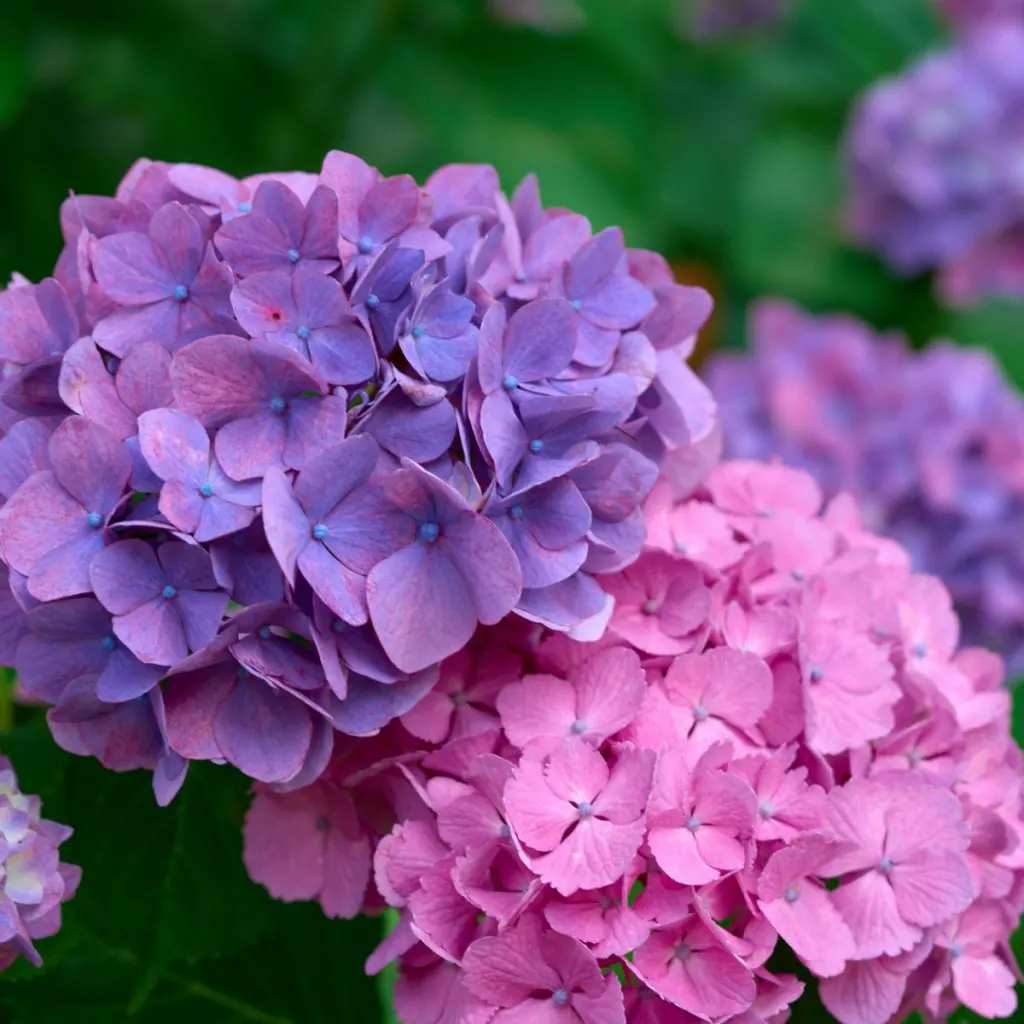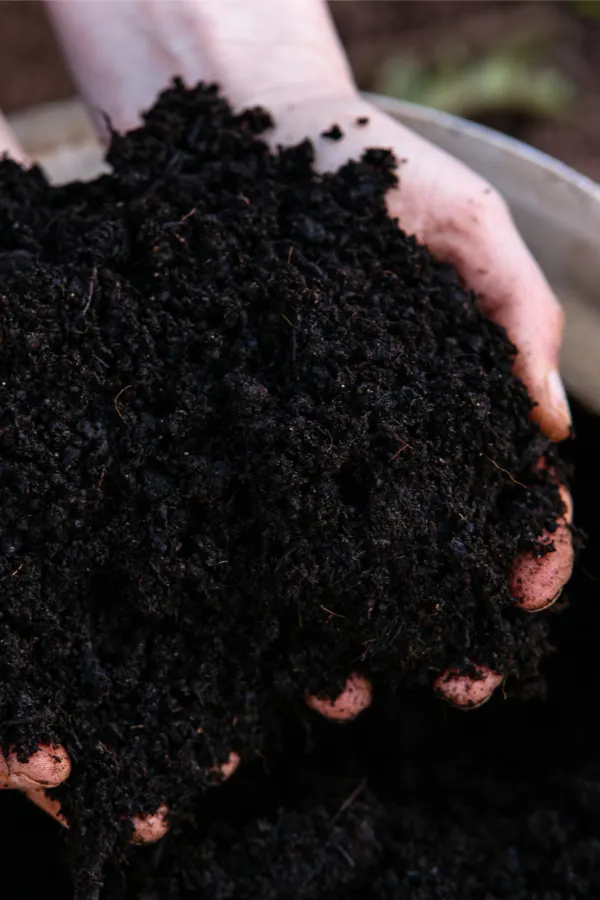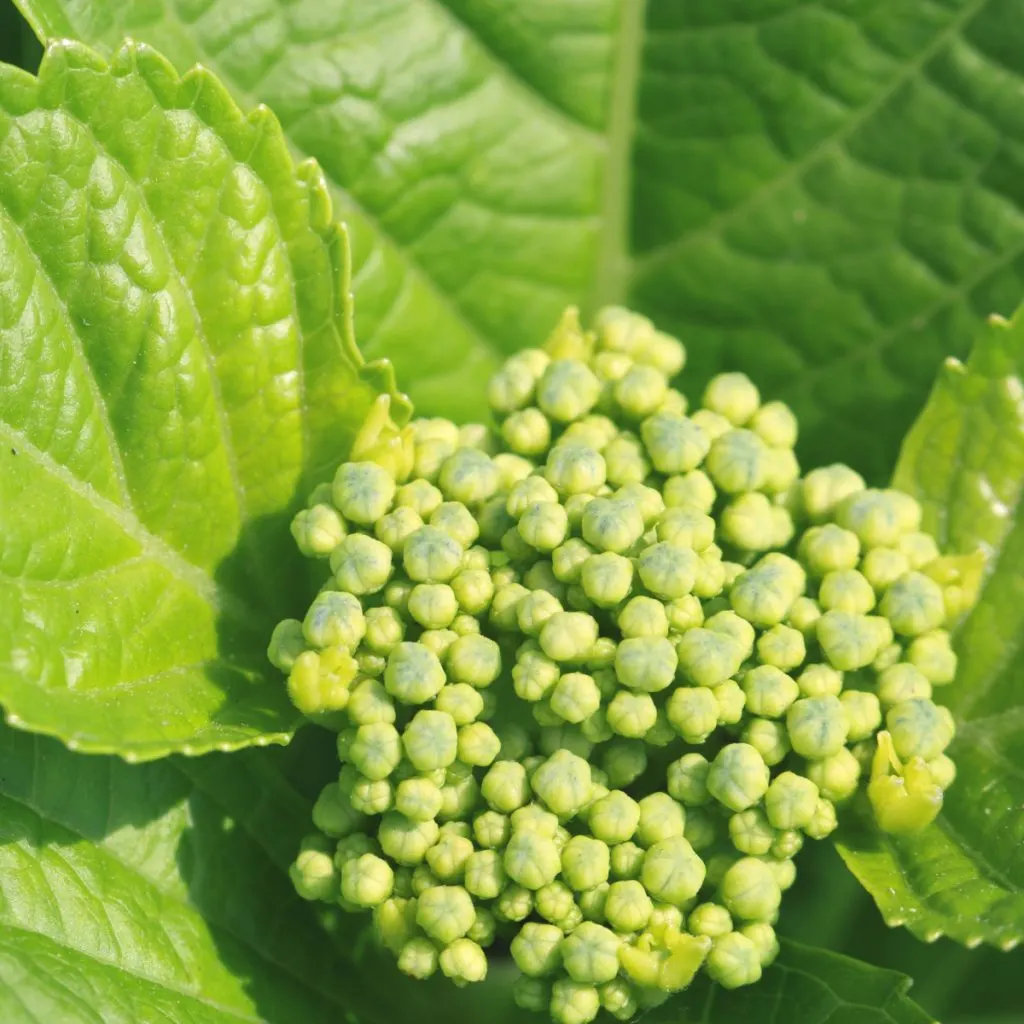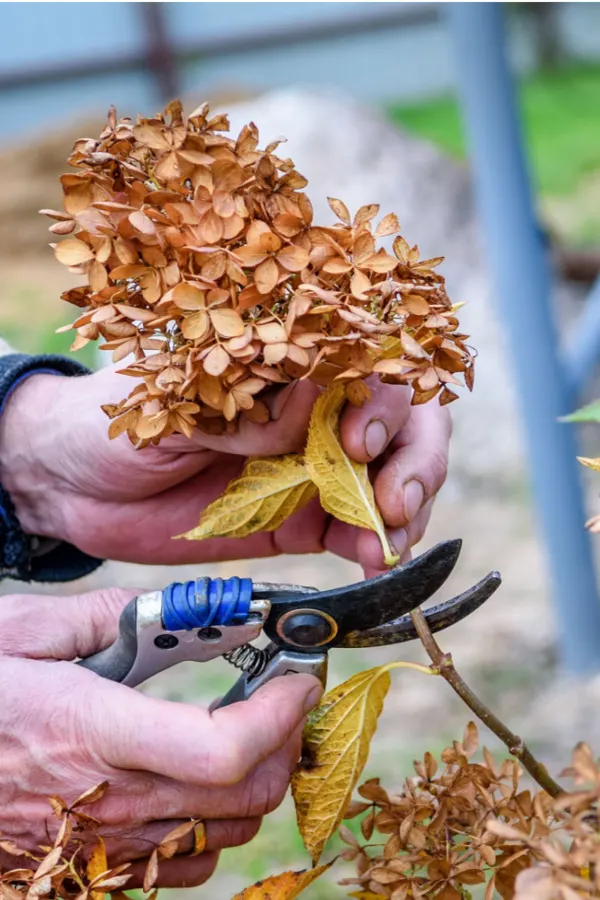Looking for the best way to fertilize your hydrangeas this year to get more blooms than ever?
With their colorful, massive blooms and bright green foliage, the hydrangea bush is one of the most popular choices of all for gardeners looking to add big perennial power flower to their landscape. One thing is for sure, its ability to grow in a wide range of climates certainly makes it perfect for growing almost anywhere.
But as popular as the hydrangea is, it’s also one of the most misunderstand plants around. In fact, it has certainly frustrated many a gardener when it comes to getting them to bloom consistently, year after year. Bust as it turns out, a lot of that frustration stems from the bush simply being fertilized incorrectly.

The great news is that fertilizing your hydrangeas isn’t difficult. Nor is it time consuming. In fact, as you will see below, by feeding your bushes at just two critical points, you can give your bushes the boost they need to flower bigger and better than ever – year after year.
With big blooming success in mind, here is a look at when and how to fertilize your hydrangeas, along with a few other critical care tips that can make all the difference between having your hydrangea bushes filled with color, or failing to bloom at all.
The Best Way To Fertilize Hydrangeas
2 Crucial Times To Fertilize Hydrangeas
Fertilizing can improve both the power and intensity of your blooms, especially when you apply it at the right time. To reach their maximum flowering potential, hydrangeas need fertilizing at two critical times. However, and this a big key to success, each time frame requires a different type and method of fertilizing for best results.
#1 Late Winter / Early Spring Fertilizing
The first time to fertilize your hydrangeas is just before or right as they are coming out of dormancy in late winter or early spring. Fertilizing at this point will help a hydrangea green up and power up for the season. This fertilizer application needs to be a low and slow type of energy to power the bush at a steady pace.

For this early dose of fertilizing, you have a couple of easy options. The first is to simply use a heavy three to four inch top dressing of fresh compost around your bush.
Compost is teeming with a wide range of nutrients that are perfect for slowly energizing hydrangeas. You can also use a moderate, all-purpose slow release granular fertilizer at the base of the plant. Affiliate Link: Southern Ag 10-10-10 Slow Release Fertilizer
Both the compost or the slow release fertilizer will slowly release their nutrients into the soil below. This is perfect for steady growth, which is important to help your hydrangea prepare for its upcoming bloom cycle.
Why not fertilize heavier? If you were to use too powerful or strong of a fertilizer, it can create too much foliage growth. Unfortunately, that forces the bush to concentrate all of its energy and efforts on foliage – all at the expense of future blooms for flowers.
Quite often, plants are fertilized too heavy at the beginning of the season, and it is exactly why they don’t bloom well! In this case – a little goes a long way!
#2 Fertilizing Before Blooming – The Best Way To Fertilize Hydrangeas
The second time period for fertilizing is vital to help your bushes bloom to their fullest potential – and it needs to be applied right before your hydrangeas bloom.

If your hydrangeas bloom in late spring and early summer, you will want to give the second dose as they are budding and just before they unfold their blooms in the early summer. If your hydrangeas bloom in late summer / early fall, hold off fertilizing with the second dose until later in the summer.
Unlike the first fertilizing dose of a low and steady balanced fertilizer, this application is geared towards blooming. Because of that, you will want to apply a fertilizer that contains a higher ratio of phosphorous and potassium than nitrogen.
Nitrogen is important for foliage and stem growth, but phosphorus and potassium are key elements for bloom power. By loading up on these two critical nutrients right before the plant goes into bloom, you can increase the overall performance of your hydrangea’s flowering cycle immensely. For more, see: Understanding N-P-K Ratios – How To Select The Best Fertilizer For Plants.
Selecting Your Fertilizer – The Best Way To Fertilize Hydrangeas
For best results, use a fertilizer that is somewhere in the neighborhood of a 10-30-20 N-P-K ratio. This will still provide adequate nitrogen, but the increase in phosphorous and potassium will help for bigger and brighter blooming.

When applying this dose, water the fertilizer in well to the soil to speed the process of absorption. Affiliate Fertilizer Link: Bloom Booster Jack’s Classic Blossom Booster 10-30-20-1.5lb
This one-two punch of fertilizing in early spring and right before your hydrangeas bloom will work wonders in producing heavy flowers. And with each passing year, it will continue to work even more as the plant builds lasting strength.
Other Bloom Factors – The Best Way To Fertilize Hydrangeas
It’s important to note that if your hydrangea struggles to bloom even after fertilizing, it might have nothing to do at all with the power in the soil. Believe it or not, and more often than you would think, when hydrangeas lack flower power, it’s often because they are being pruned at the incorrect time.
When To Prune – How To Fertilize Hydrangeas For Bigger Blooms
You need to prune many hydrangea varieties right after they complete their blooming cycle. Bigleaf, Oakleaf and even climbing hydrangeas all fit into this category.
They all produce the next year’s flowers on the growth that occurs after they bloom. That means if you prune late or cut back in the fall, you are also cutting of next year’s flowers.

Smooth or Panicle varieties on the other hand grow on new growth in the same year. Since they bloom in late summer, you can prune these in late winter or very early spring. The key with these varieties is to prune before they grow again in the spring.
One final note on pruning. Less is always more when it comes to cutting back hydrangeas. They actually do not require heavy pruning to keep blooming. It’s best to prune only to hold shape and keep the bushes from becoming overly large.
Here is to giving your hydrangeas the food they need this year when they need it. And even more – to having your bushes bloom brighter and bigger than ever!
This Is My Garden
Follow Our Facebook Page For Great Gardening Tips And Advice! This Is My Garden Facebook Page
This Is My Garden is a garden website created by gardeners, for gardeners. Jim and Mary Competti have been writing gardening, DIY and recipe articles and books and speaking for over 15 years from their 46 acre Ohio farm. They publish three articles every week, 52 weeks a year. Sign up today to follow via email, or follow along!
